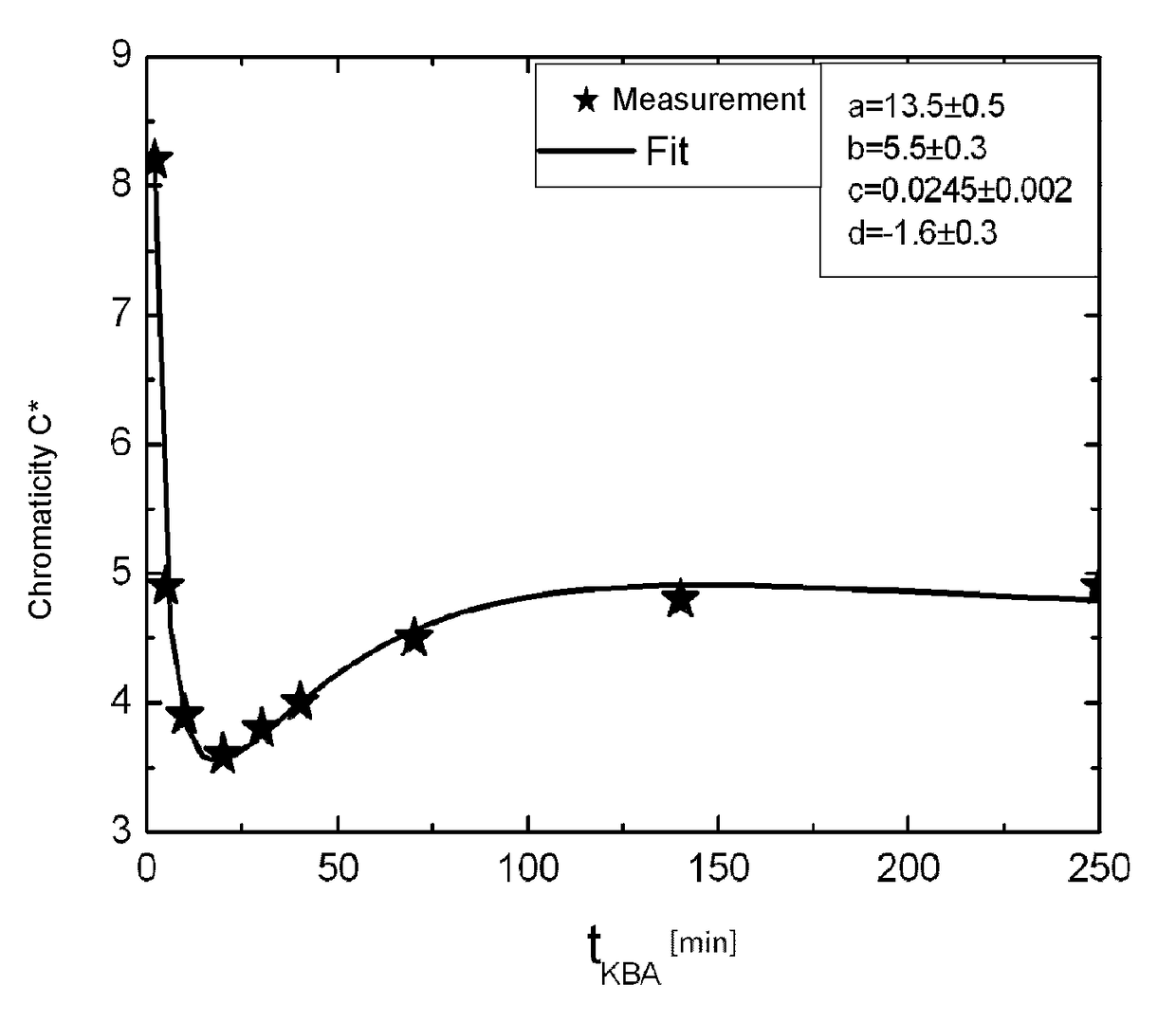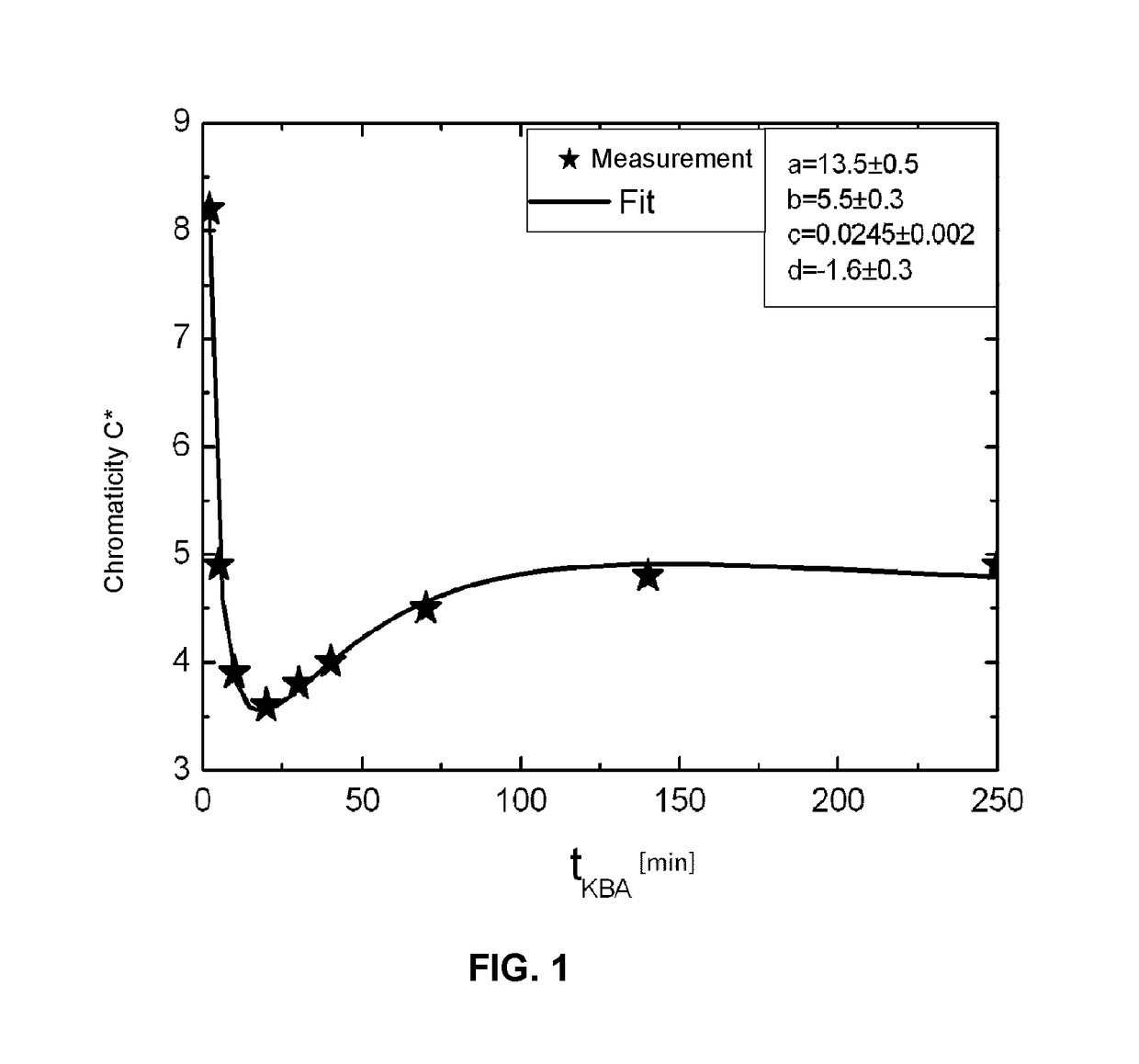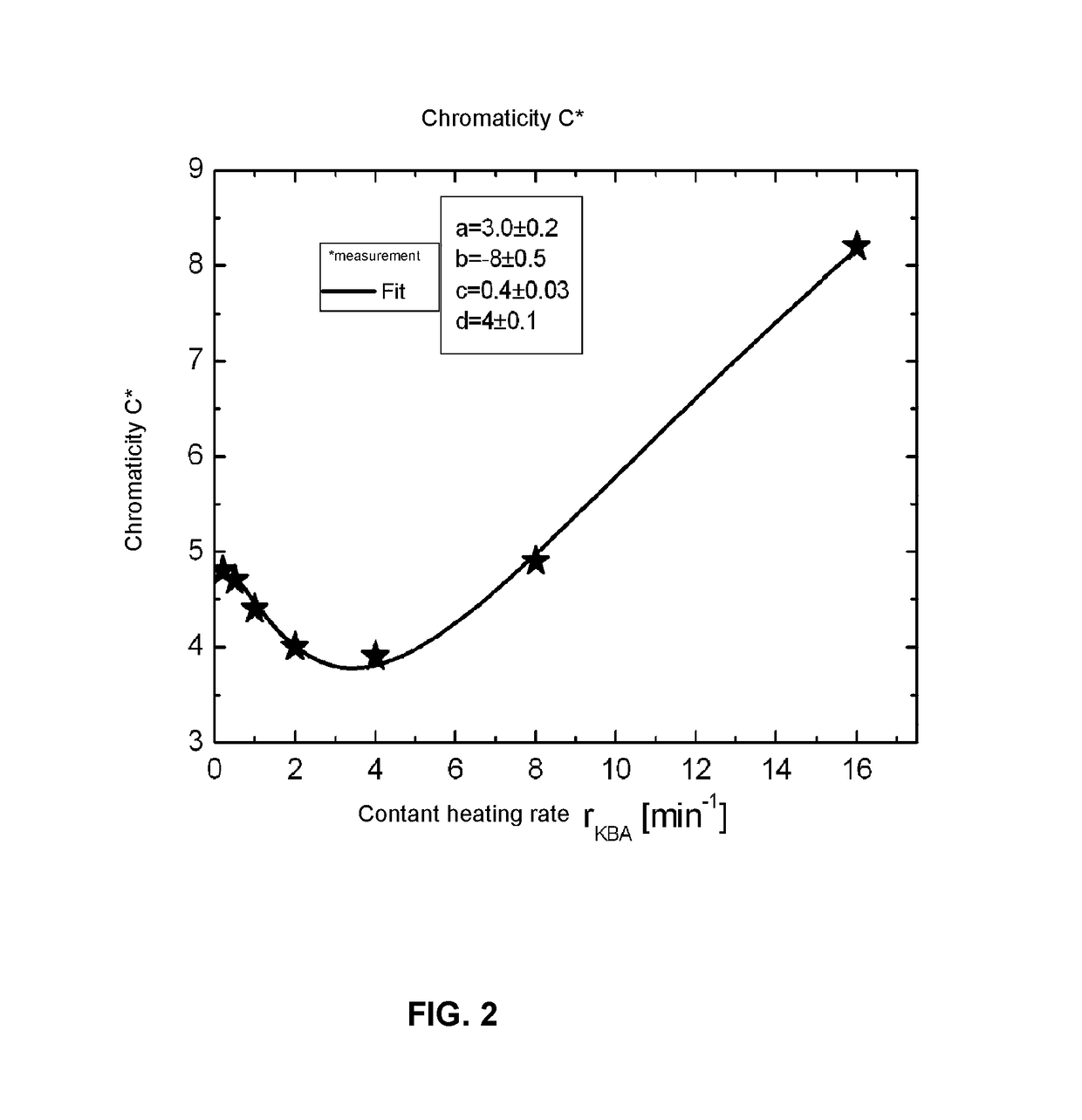Glass and glass ceramic
a glass and ceramic technology, applied in the field of glass and glass ceramics, can solve the problems of difficult substitution of arsenic oxide by sno, low-iron raw materials cost, and difficult reduction of fesub>2, and achieve the effect of prolonging the residence time in the nucleation phas
- Summary
- Abstract
- Description
- Claims
- Application Information
AI Technical Summary
Benefits of technology
Problems solved by technology
Method used
Image
Examples
Embodiment Construction
[0152]A glass according to the invention (Example) and a comparative glass (Comparative Example) were investigated relative to their processing window.
[0153]The compositions of the two glasses are listed in the following Table 1.
[0154]
TABLE 1(data in wt. %)ExampleComparative ExampleAl2O321.322As2O3BaO0.521.19CaO0.240.035Fe2O30.0130.013FK2O0.110.29Li2O3.743.71MgO0.630.72MnO20.001Na2O0.520.38Nd2O30.056P2O50.0271.51Sb2O3SiO266.4865.5SnO20.110.31TiO22.22.08ZnO1.79ZrO21.722.22SrO0.53ClNot measuredHfO20.040.04
[0155]The fluorine concentration was determined by flame spectroscopy, Li2O was determined wet chemically, and the other elements were determined with x-ray fluorescence spectroscopy.
[0156]The impurities CoO, Cr2O3, Cs2O3, CuO, MoO3, NiO, PbO, Rb2O3, V2O5 in the glasses lie below the concentration of 0.005 wt. %. The measured HfO2 is entrained as an impurity via the ZrO2 raw material.
[0157]The respective ratios for the sums of the components, corresponding to conditions B1 and B2, ar...
PUM
| Property | Measurement | Unit |
|---|---|---|
| transparent | aaaaa | aaaaa |
| light transmittance | aaaaa | aaaaa |
| crystallite size | aaaaa | aaaaa |
Abstract
Description
Claims
Application Information
 Login to View More
Login to View More - R&D
- Intellectual Property
- Life Sciences
- Materials
- Tech Scout
- Unparalleled Data Quality
- Higher Quality Content
- 60% Fewer Hallucinations
Browse by: Latest US Patents, China's latest patents, Technical Efficacy Thesaurus, Application Domain, Technology Topic, Popular Technical Reports.
© 2025 PatSnap. All rights reserved.Legal|Privacy policy|Modern Slavery Act Transparency Statement|Sitemap|About US| Contact US: help@patsnap.com



